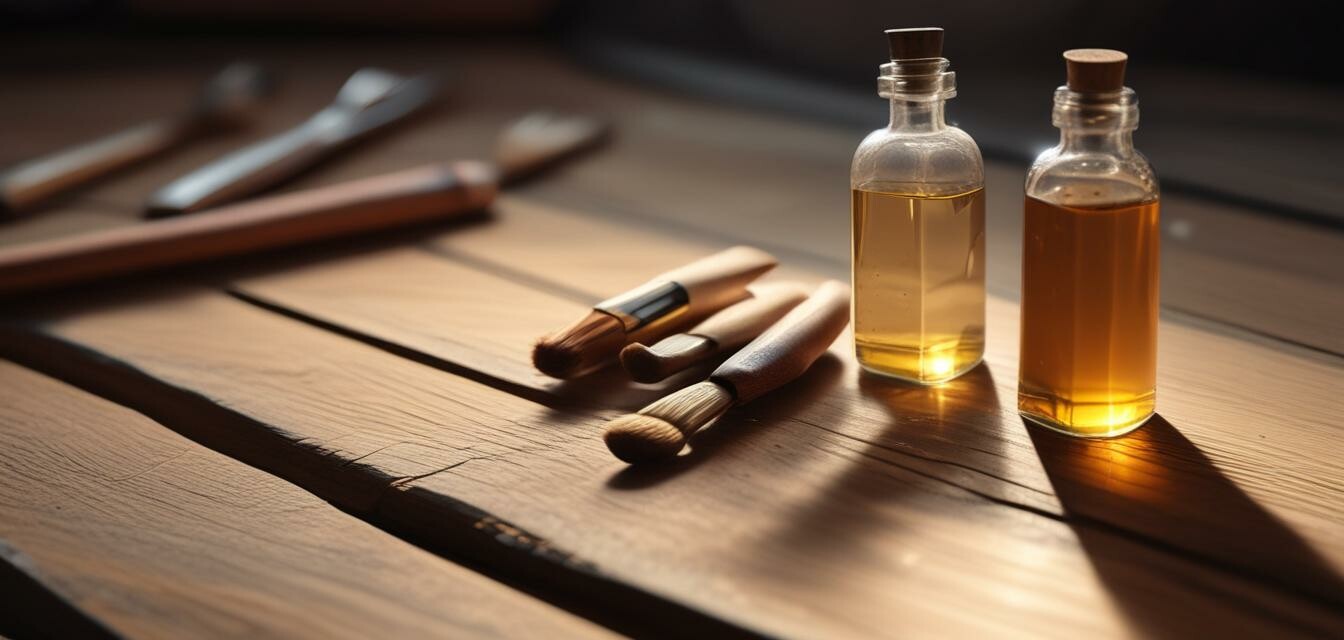
Best Practices for Applying Wood Oil: A Step-by-Step Guide
Key Takeaways
- Choosing the right wood oil is crucial for durability.
- Preparation of the wood surface ensures better absorption.
- Applying multiple thin coats yields better results than a single heavy coat.
- Tools like brushes and cloths are essential for a smooth application.
- Regular maintenance prolongs the life of your wood products.
Applying wood oil to furniture, kitchenware, and other natural wood products can enhance their appearance and prolong their life. In this comprehensive guide, we’ll walk you through the best practices to ensure a successful application. Let's get started!
Understanding Wood Oil
Wood oil enhances the natural beauty and durability of wooden surfaces. There are various types of wood oils available, including linseed oil, tung oil, and mineral oil. Each has its unique properties and benefits.
Types of Wood Oils
| Type of Oil | Features | Best For |
|---|---|---|
| Linseed Oil | Penetrates deeply; enhances grain | Indoor furniture |
| Tung Oil | Water-resistant; durable finish | Outdoor furniture |
| Mineral Oil | Non-toxic; easy to apply | Kitchenware |
Step-by-Step Guide to Applying Wood Oil
Step 1: Gather Your Materials
You will need the following materials for a successful application:
- Wood oil of your choice
- Clean cloths or rags
- Soft-bristle brush (optional)
- Sandpaper (fine grit)
- Protective gloves
- Respirator mask (if necessary)
Step 2: Prepare the Wood Surface
Proper preparation is key to a successful finish. Follow these steps:
- Clean the surface to remove dust and debris.
- Sand the wood lightly with fine-grit sandpaper to create a smooth surface.
- Wipe off any sanding dust with a damp cloth and allow to dry.
Step 3: Apply the Wood Oil
When applying wood oil, follow these best practices:
- Use a clean cloth or brush to apply a thin and even layer of oil.
- Work in the direction of the wood grain to minimize marks.
- Ensure all areas are covered, paying special attention to edges and ends.
Step 4: Allow to Absorb
Let the oil soak into the wood for the recommended time according to the product instructions. This typically ranges from 15 minutes to several hours.
Step 5: Wipe Off Excess Oil
After the absorption time is up:
- Use a clean cloth to wipe away any excess oil.
- Be thorough to prevent a sticky finish.
Step 6: Repeat as Needed
For optimal results, consider applying additional coats:
- Allow the previous coat to dry completely.
- Apply a second thin layer, following the same process as before.
Maintenance Tips
To maintain the beauty of your finished wood, follow these tips:
- Regularly clean surfaces with a damp cloth.
- Reapply wood oil every 6 to 12 months, or as needed.
- Avoid harsh chemicals that can strip the finish.
Conclusion
Applying wood oil isn’t just about aesthetics; it's a crucial step in maintaining the integrity and longevity of your wooden products. By following this guide, you can ensure that each application enhances the beauty and durability of your wood surfaces.
Pros
- Enhances the natural beauty of wood.
- Increases durability and resistance to water.
- Easy to apply and maintain.
Cons
- Requires regular maintenance for best results.
- Some oils may take longer to cure.
For further reading on purchasing wood products and enhancing your home, be sure to visit our Buying Guides section for more insights. Also, explore our range of Wood Finishing Products that can elevate your wood care routine.